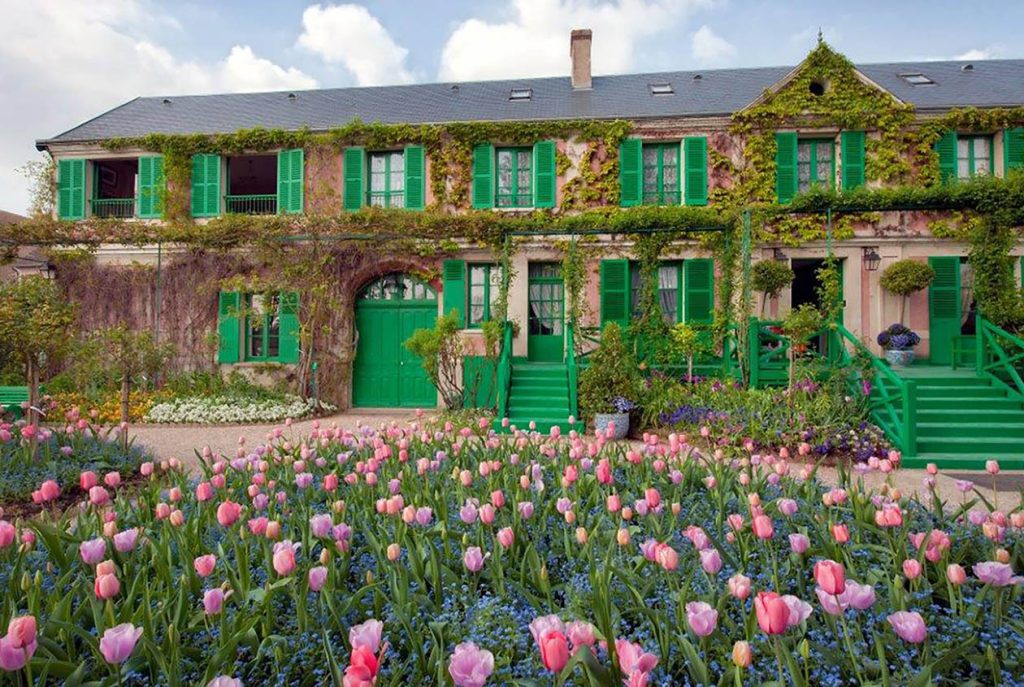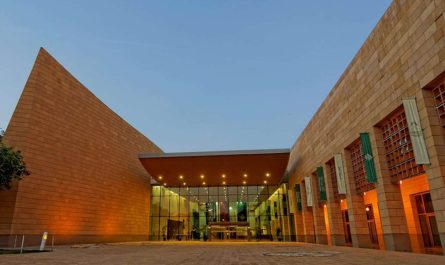Brittany, located in the northwest corner of France, is renowned for its stunning landscapes, rich history, and vibrant culture. If you’re planning a visit in August or September, you’re in for a treat as the weather is pleasant and the region’s charm is at its peak. Here’s a detailed guide to some of Brittany’s most captivating attractions, ensuring you make the most of your trip.
Mont Saint-Michel Abbey
Location and Architecture:
Mont Saint-Michel Abbey sits atop a small island in Normandy’s bay, which transforms dramatically with the tides. During high tide, the abbey appears to float on the water, creating a mesmerizing sight that has enchanted visitors for centuries. The abbey’s architecture is a masterpiece of Gothic design, showcasing intricate stonework, towering spires, and expansive halls that reflect its rich medieval history. Established in the 8th century, it served as a place of pilgrimage and worship, and its layered construction mirrors the evolution of Gothic architecture over time.
Exploration Experience:
As you wander through the abbey, you’ll encounter ancient cobblestone streets and narrow passageways that lead to the abbey’s complex of buildings, including the abbey church, cloisters, and monks’ quarters. Each corner of Mont Saint-Michel is steeped in history, offering a glimpse into its past as a spiritual and cultural center. The abbey’s terraces provide breathtaking views of the surrounding bay, making it an ideal spot for photography and reflection.
Visiting Mont Saint-Michel Abbey
Opening Hours:
Mont Saint-Michel Abbey is open daily to visitors, but hours may vary by season:
- April to September: 9:30 AM – 7:00 PM (last entry at 6:00 PM)
- October to March: 9:30 AM – 6:00 PM (last entry at 5:00 PM)
Admission Fees:
- Adults: Approximately €10
- Reduced Rate: Approximately €8 (for seniors, students, and groups)
- Children under 18: Free admission
Recommendations for Your Visit:
- Timing Your Visit:
To avoid the heaviest crowds and enjoy a more leisurely experience, plan your visit in the early morning or late afternoon. Visiting during August and September is ideal due to the pleasant weather and fewer tourists compared to peak summer months. - Guided Tours:
Consider joining a guided tour to gain deeper insights into the abbey’s history and architecture. Many tours are available in various languages and can enhance your understanding of the site’s significance. - Explore the Surroundings:
Don’t miss the chance to explore the island’s charming streets and alleys. The quaint shops and restaurants offer local specialties and souvenirs. Take time to walk along the ramparts and enjoy panoramic views of the bay. - Prepare for the Weather:
Brittany’s weather can be unpredictable, so bring appropriate clothing for both sunny and rainy conditions. Comfortable walking shoes are essential for navigating the cobblestone paths. - Plan Your Arrival:
Arriving early helps you enjoy the abbey before the day-trippers and cruise ships arrive. It also gives you time to explore the surrounding area, including the small village at the base of the island. - Dining and Refreshments:
There are several dining options on the island, ranging from casual cafes to more formal restaurants. If you prefer a quieter experience, consider bringing a picnic to enjoy in one of the designated areas. - Accessibility:
While the abbey is accessible, be prepared for steep stairs and uneven surfaces. The site may not be fully accessible for those with mobility issues, so plan accordingly.
Mont Saint-Michel Abbey is a remarkable destination that offers a rich blend of history, architecture, and natural beauty. By following these tips and recommendations, you can ensure a memorable visit to this timeless jewel of Brittany. Whether you are captivated by its majestic Gothic design, its stunning tidal views, or its serene atmosphere, Mont Saint-Michel promises an experience that is both enchanting and unforgettable.
Gulf of Morbihan
The Gulf of Morbihan is a natural wonder, a vast inland sea dotted with numerous small islands and sheltered bays. Often hailed as one of France’s most beautiful bays, it offers a unique maritime landscape. A boat tour of the gulf allows you to take in the stunning scenery, which includes sandy beaches, lush forests, and diverse birdlife. August and September are ideal for water activities such as sailing, kayaking, and paddleboarding due to the favorable weather conditions. The Gulf of Morbihan’s microclimate supports a wide range of flora and fauna, making it a paradise for nature lovers.
Maison de la Duchesse Anne
Located in Rennes, the capital of Brittany, Maison de la Duchesse Anne is a well-preserved medieval building that once served as the residence of the Duchess Anne of Brittany. The house showcases the opulent lifestyle of Brittany’s nobility and features intricate period decorations. Inside, you can explore the exquisite craftsmanship of the era, including period furniture and artworks. During August and September, the house often hosts special exhibitions and cultural events, providing deeper insights into Brittany’s heritage.
Château de Josselin
Château de Josselin is a majestic castle situated in the town of Josselin, near Vannes. With its well-preserved facade and beautiful gardens, the castle is a significant historical site in Brittany. Dating back to the 11th century, the castle offers guided tours of its opulent interiors, including grand halls and fine furniture. The castle grounds feature meticulously maintained gardens perfect for a leisurely stroll. During the summer and early autumn months, the castle hosts various cultural and medieval-themed events, adding an extra layer of enjoyment to your visit.

Musée Malraux
Location and Architecture:
Musée Malraux is situated in the vibrant port city of Le Havre, a city known for its modernist architecture and cultural revitalization. The museum itself is housed in a striking modernist building that complements the city’s contemporary architectural landscape. Designed by architect Oscar Niemeyer, the museum’s sleek lines and open spaces create a fitting backdrop for its diverse art collection.
Collection Highlights:
The museum’s collection is renowned for its extensive array of Impressionist paintings, featuring masterpieces by celebrated artists such as Claude Monet, Edgar Degas, and Pierre-Auguste Renoir. These works provide a window into the evolution of Impressionism, showcasing the artists’ innovative techniques and vibrant color palettes.
In addition to Impressionist art, Musée Malraux houses a selection of works by other influential artists, including Pablo Picasso. This diverse collection allows visitors to appreciate a broad spectrum of artistic movements and styles. The museum also curates temporary exhibitions that delve into various aspects of art and cultural history, offering fresh perspectives and new discoveries.
Brittany’s Historical Artifacts:
Beyond its impressive art collection, the museum includes artifacts and artworks that highlight Brittany’s rich cultural heritage. These items provide context and insight into the region’s historical evolution, including its maritime history and local traditions. This aspect of the museum’s collection adds depth to the visitor’s understanding of Brittany’s cultural landscape.
Visiting Musée Malraux
Opening Hours:
Musée Malraux is typically open to visitors from:
- Tuesday to Sunday: 10:00 AM – 6:00 PM
- Closed on Mondays and certain public holidays
Admission Fees:
- Adults: Approximately €7
- Reduced Rate: Approximately €5 (for seniors, students, and groups)
- Children under 18: Free admission
Recommendations for Your Visit:
- Check for Special Exhibitions:
August and September are particularly exciting times to visit Musée Malraux, as the museum often features special exhibitions and cultural programs. These exhibitions can provide unique insights into different art forms and historical periods, enhancing your overall experience. Check the museum’s official website or contact them in advance to find out about any current or upcoming exhibitions. - Guided Tours and Audio Guides:
To enrich your visit, consider joining a guided tour or renting an audio guide. Guided tours, often available in multiple languages, offer detailed explanations of the artworks and their significance. Audio guides provide a self-paced exploration of the museum’s highlights and are a great option for those who prefer a more independent experience. - Explore the Surroundings:
Le Havre is a city with much to offer beyond the museum. Take time to explore the surrounding area, including the city’s modernist architecture, the picturesque harbor, and local dining options. The city’s revitalized waterfront and historic sites are worth a visit. - Plan Your Visit:
To make the most of your visit, plan ahead by checking the museum’s calendar for any special events or exhibitions. Arriving early in the day can also help you avoid crowds and enjoy a more relaxed experience. - Accessibility:
Musée Malraux is generally accessible to visitors with mobility impairments. However, if you have specific needs, it is advisable to contact the museum in advance to ensure that any necessary accommodations are available. - Dining and Refreshments:
The museum has a café where you can enjoy a light meal or refreshments during your visit. Additionally, there are various dining options in Le Havre’s city center, offering everything from casual bites to fine dining.
Musée Malraux in Le Havre is a treasure trove for art enthusiasts and history buffs alike. With its impressive collection of Impressionist paintings, significant historical artifacts, and engaging special exhibitions, the museum provides a rich and rewarding cultural experience. Whether you are drawn to the art of Monet and Picasso or interested in Brittany’s historical context, Musée Malraux offers a captivating journey through both art and history. Make sure to take full advantage of your visit by exploring the museum’s offerings and the vibrant city of Le Havre.
Claude Monet’s Home and Gardens

Although not in Brittany itself, Claude Monet’s home and gardens in Giverny are a must-visit if you have extra time. This is the place where Monet lived and created some of his most famous works, including his renowned water lily paintings. The gardens, with their vibrant flowerbeds and serene lily ponds, provide a picturesque setting that inspired much of Monet’s art. August and September are particularly delightful times to visit, as the gardens are in full bloom, offering a spectacular visual experience.
Bayeux Tapestry
While the Bayeux Tapestry is located in Normandy, it is a significant historical artifact that is worth a visit if you’re traveling around France. This 70-meter-long tapestry narrates the events of the 1066 Norman Conquest of England through intricate embroidery. The tapestry’s detailed scenes and historical significance make it a valuable resource for understanding medieval history. If you have the chance to visit Normandy, the Bayeux Tapestry is an essential stop.
Abbey of Saint-Antoine
The Abbey of Saint-Antoine, located in Saint-Antoine, is an ancient religious site that was a major center of spirituality during the Middle Ages. The abbey’s elegant architectural style and preserved artwork provide a glimpse into its historical significance. Visiting the abbey in August and September allows you to enjoy its peaceful surroundings and the serene environment of its gardens.
These attractions offer a diverse array of cultural, historical, and natural experiences, allowing you to fully immerse yourself in the uniquecharm of Brittany. August and September are ideal times to explore this enchanting region, with favorable weather and a variety of events to enhance your visit. I hope these recommendations help you plan a memorable trip to Brittany, filled with unforgettable experiences and discoveries!



